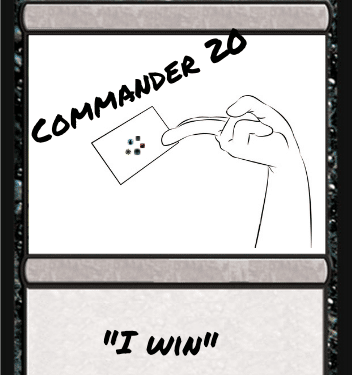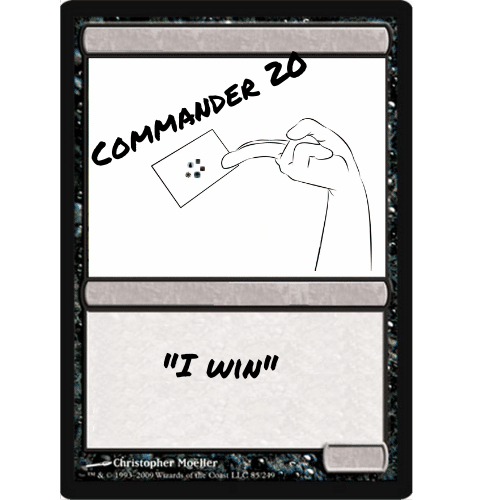Looking to build a CEDH deck? If so, here is the content you need to do just that! This will go over everything from the spirit behind CEDH, to even providing a template needed to build a CEDH deck. Excited? Let’s begin!
Table of Contents
The Spirit behind CEDH
CEDH, otherwise known as Competitive EDH, has only 1 rule. Build the best deck possible with your commander. There is no need for a rule 0 conversation because every deck is supposed to run as optimally as possible.
This means no card, strategy, or tactic is banned. As long as you can make it work at the highest power it is free game. Yes, that also includes land destruction by the way.
While this belief is very freeing for many players, it is also what makes the format “Restrictive” for many. The reason being is the best cards are played, and unfortunately, not every card is the best. This means cards like Teferi’s Protection, Eerie Ultimatum, and even Bala Ged Recovery, very rarely would see play in this environment. That said, just because they are harder to play does not mean they don’t have room.
The difference is that these cards will underperform against most cards, but there are ways around that, such as specific commanders that have powerful synergy with these cards or building around the specific card and finding a way to win with it. A common example is Anje and Godo who play very unique cards most decks don’t run in order to make their deck work. But both are considered CEDH commanders.
Therefore as long as you come in with the spirit of “I will take this 1 card to the max with no restrictions”, your deck will most likely end up being CEDH or Fringe CEDH (A Power level that can compete against most CEDH decks but usually require more experienced pilots.)
What Makes a Deck CEDH
In short, to build a CEDH deck, it must be optimized, efficient, and have a good win-con to be considered CEDH.
A deck that has one or neither will not be CEDH but Fringe or lower.
But what are efficiency and optimization?
Efficiency is the ability of your deck to consistently do what it wants.
Optimization is the ability of a card to be the best at what it wants.
In short, Efficiency is how well your deck can consistently do something and optimization is how good your card is compared to similar cards.
But what are the steps to building a CEDH deck?
Step 1: How Do I Win?
Rather than your commander, the first step to building a CEDH deck is determining, “how do I win?”
There are 3 ways for a deck to win.
- Beats
- Combo
- Value
Beats win through beating people to death, usually through a swarm of small or big creatures. An example of this is Tymna/Kamahl. Whose win con is to stax the board and win with beats. These decks are rare due to how easy they are to disrupt.
Combo is usually playing an effect that just states you win the game. Thassa’s and Consultation are the most popular ones you see. This is the most powerful way to win and is usually what most decks play.
While value is winning through an overwhelming amount of board advantage that the other three can’t beat. From there, you pull the win through a combo or some other effect. Two good examples are Dockside in Korvold which basically wins you the game, or Ad Nausuem strategies.
From there, choose the best commander to match your win-con or deck function and you are good to go!
How Many Win-Cons to Build a CEDH Deck?
A deck usually needs around 2-3 ways to win the game to be effective in closing out games. Failure to do so leads to more losses on your end and a lower overall enjoyment rate with the other players.
That said, how do you build CEDH decks win cons? Simple, put cards that you want to see win the game as your win cons.
If you want to win through beats, play cards like craterhoof behemoth, and the rest of the deck should go to being synergistic or supporting the win cons.
If you want to win through combos, find your favorite combo such as dualcaster + twinflame, and build your deck around doing that.
Then if you want to win by value, just find the cards that will overwhelm your opponents and make it impossible for them to catch up, as consecrated sphinx does in Kinnan.
Finding the best win condition for your deck can be a challenge so I recommend looking at actual decks you want to play and see what win-cons those include. A good resource for this is the Cedh Database.
Finally, a good rule of thumb, is that each win needs only 1-2 cards to work. The less cards needed to win means less chance for disruption and easier to pull off. So 4-8 cards should be dedicated to winning the game.
Step 2: Make A Deck Efficient
Efficiency has been recorded extensively in my book Rule of 20 as well in the CEDH.Guide Report. In short, there are 4 mechanics that make up every deck, 1) Ramp, 2) Draw, 3) Control, and 4) value. If you are unfamiliar with what these are then I suggest either reading the previously mentioned Rule of 20 or my deck building template. Both give you answers to all of these.
In short though:
- Ramp is anything that lets you use more mana
- Draw is anything that lets you see more cards
- Control is anything that protects your board or disrupts others.
- Value is anything that helps you win.
Understanding these is vital. The reason why is a failure to understand efficiency means you can never understand optimization. As optimization is the ability of a card to be the best at each of these 4 categories.
Now, a deck’s efficiency needs vary from commander to commander. CEDH.Guide did a great report located here that goes over the statistical average for every deck in the CEDH database, on average they run 18 control, 21 draw, 20 ramp, and 10 value cards. The rest are commanders and lands.
That said, a simple guide to follow is the Rule of 20, which states that a deck should try to run on average 20 control, 20 draw, and 20 ramp. The rest is value, lands, and commanders. In doing so, you achieve some of the highest efficiency a deck can make before losing its ability to win. Making this the best rule of thumb to follow for consistency.
To summarize, a cedh deck should try to run 20 ramp, 20 control, and 20 draw cards to be consistent. From there, you can cut or add pieces to synergize with your game plan.

Step 3: Make A Deck Optimized
An optimized deck is the most expensive deck… Or so the joke goes. In reality, an optimized card does not need to be expensive, wild growth, tinder wall, and Fire covenant are optimized cards, but aren’t 50+ dollars. In fact, two of them are below 50 cents.
An optimized card is a card that achieves the best results for what your deck is trying to do. This is a little hard to identify as it is so subjective and is changing with each new set printed, but there are a few common traits to look for.
- Low Mana value
A card that has a lower mana value is usually the better choice as it is less intensive than a card even one mana higher. Ideally you are looking for 2 CMC or lower.
- Flexibility
A card that has an increase in flexibility is great. This isn’t necessary more options like mystic confluence has, but rather “lines” that make it better than other options.
A good example is stifle when running final fortune. Stifle on its own is not great due to its limited uses, but a stifle makes it to where you can take an extra turn at instant speed and not lose the game. Increasing its flexibility.
- Power
This is simply how powerful of an effect the card has. A counterspell against only instants is much less powerful than a card that can counter any spell. This is usually defined by the previous 2 traits, but some cards are just game warping in power, such as smothering tithe or seedborn muse.
So when deciding what the optimized card is, compare that to every card that does a similar function, if a card has lower CMC, more flexible, and higher power then this is an easy upgrade to build a CEDH deck. (A good example is lightning bolt and lightning strike).
Besides that, getting familiar with more cards is the best way to discover what is optimized. I suggest checking out the CEDH Staple Database. It is filled with optimized cards that most decks want to play.
Put It All Together And….
You have built a CEDH deck! If you can understand these three steps then you can make any deck CEDH.
Simply watch more content and play more games if you want to get better. I recommend reading my guide to deck building, or my 2 ebooks Rule of 20, or Commander Better. Both are about becoming better at the game so your decks can always do what you want in any game. Good luck and happy playing!

